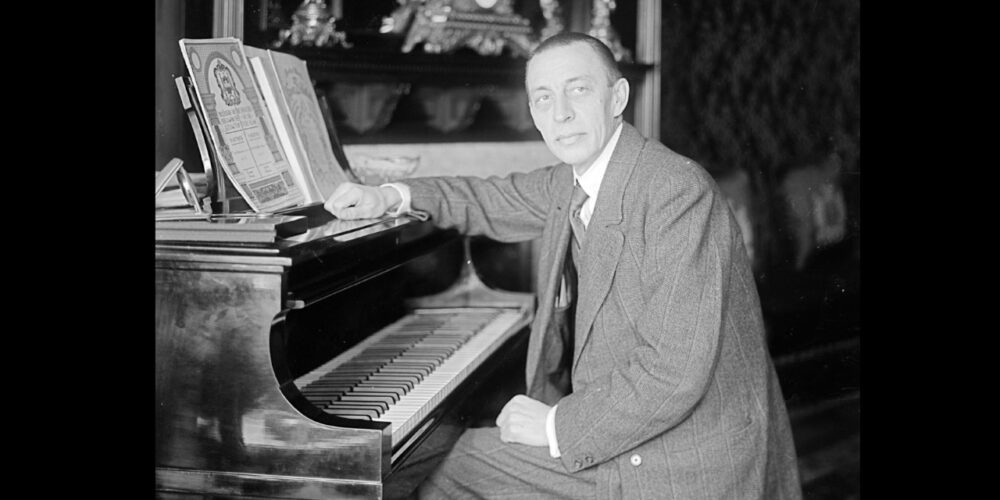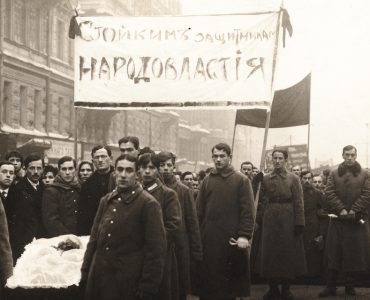Sergei Rachmaninoff (1873–1943), who has been called “the last of the great romantics,”[efn_note]Michael Scott, Rachmaninoff: The Last of the Great Romantics (The History Press, 2023).[/efn_note] was Ayn Rand’s favorite composer — but she first encountered his music only after escaping Russia to the United States. Materials stored in the Ayn Rand Archives shed light on what his music meant to her.
In biographical interviews from the 1960s, now housed in the Archives, Rand recalled that she heard his work on the radio for the first time in the 1930s while living in New York City. Listening to Rachmaninoff’s Third Piano Concerto, she reacted indifferently to the first two movements. “It‘s the third movement that I liked on first hearing, that I liked immediately. . . . After that, I bought the record. . . . It took me quite a long time, that is, listening very often and repeatedly before I would begin to really hear or properly appreciate classical music. And I think Rachmaninoff, to this day, is the only one I really like.”
During a 1966 interview on Columbia University’s WKCR radio, Rand elaborated on her reasons for enjoying Rachmaninoff:
Now, Rachmaninoff, of the serious composers, is my favorite. There, I hear an enormous heroic sense of life. What Rachmaninoff projects is that life is a struggle. It is a difficult struggle, but men will win. There is an almost tragic benevolence in him — tragic in the sense that there is always an enormous struggle and sometimes a great deal of pain in his music, but he always projects the victory of that which is the human element in his music. . . . Man triumphs but at enormous price. And as such, Rachmaninoff does not represent my exact sense of life, but is the nearest to my own sense of life in serious music.
In 1966, a fan asked Rand if any real-life music inspired the Halley Concerto from Atlas Shrugged. The concerto, which appears at key moments throughout the novel, is described as “a symphony of triumph” and serves as a source of inspiration for the novel’s protagonist, Dagny Taggart. Rand replied that while her favorite composer was Rachmaninoff, “even his music does not quite fit what I had in mind for Richard Halley.”
That said, the surest evidence of Rand’s appreciation for Rachmaninoff can be found in The Fountainhead. In the first chapter of the novel’s fourth part, Rand introduces a boy on a bicycle who hopes “to find joy and reason and meaning in life . . . . He had always wanted to write music, and he could give no other identity to the thing he sought. If you want to know what it is, he told himself, listen to the first phrases of Tchaikovsky’s First Concerto — or the last movement of Rachmaninoff’s Second. Men have not found the words for it nor the deed nor the thought, but they have found the music.”
Rachmaninoff’s life shared a number of parallels with Rand’s. He studied music at the Saint Petersburg Conservatory in the same city where Rand was born and raised. During the 1917 Revolution, Rachmaninoff’s estate was seized as state property, as was the pharmacy owned by Rand’s father. Both Rachmaninoff and Rand fled to Crimea during the ensuing civil war and later departed the Soviet Union, never to return. In time, both settled in New York City and became American citizens. Today, both are buried at the same cemetery in Valhalla, New York. As romantic artists, they created enduring masterpieces that continue to thrill audiences to this day.
Image credit: Universal History Archive/Universal Images Group via Getty Images.






